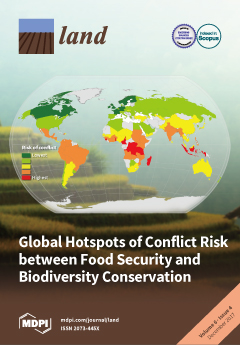Resources
Displaying 1936 - 1940 of 2258Compensation for Expropriated Community Farmland in Nigeria:
In Nigeria, the recurring impoverishment and other negative socioeconomic impacts endured by landholders affected by expropriation are well-documented and call into question the Land Use Act’s (LUA) effectiveness in protecting local land rights. The World Bank’s Land Governance Assessment Framework found that, in Nigeria, “a large number of acquisitions occurs without prompt and adequate compensation, thus leaving those losing land worse off, with no mechanism for independent appeal even though the land is often not utilized for a public purpose”.
The Community Land Act in Kenya
Kenya is the most recent African state to acknowledge customary tenure as producing lawful property rights, not merely rights of occupation and use on government or public lands. This paper researches this new legal environment. This promises land security for 6 to 10 million Kenyans, most of who are members of pastoral or other poorer rural communities. Analysis is prefaced with substantial background on legal trends continentally, but the focus is on Kenya’s Community Land Act, 2016, as the framework through which customary holdings are to be identified and registered.
Determining the Frequency of Dry Lake Bed Formation in Semi-Arid Mongolia From Satellite Data
In the Mongolian Plateau, the desert steppe, mountains, and dry lake bed surfaces may affect the process of dust storm emissions. Among these three surface types, dry lake beds are considered to contribute a substantial amount of global dust emissions and to be responsible for “hot spots” of dust outbreaks. The land cover types in the study area were broadly divided into three types, namely desert steppe, mountains, and dry lake beds, by a classification based on Normalized Difference Water Index (NDWI) calculated from MODIS Terra satellite images, and Digital Elevation Model (DEM).
A Conceptual Model for Land System Dynamics as a Coupled Human–Environment System
This paper presents a conceptual model of land as a coupled human–environment system. Land use and land cover are incorporated as elements of the human and environment system respectively. Drivers and associated processes that influence land use, land cover, and land system dynamics are incorporated within a set of sub-systems. The model includes consideration of driving sub-systems as a set of capital funds and flows, and how these are influenced by linkages between processes in the human (socio-economic) and environment systems and sub-systems.
Assessing the Sustainability of EU Timber Consumption Trends: Comparing Consumption Scenarios with a Safe Operating Space Scenario for Global and EU Timber Supply
The growing demand for wood to meet EU renewable energy targets has increasingly come under scrutiny for potentially increasing EU import dependence and inducing land use change abroad, with associated impacts on the climate and biodiversity. This article builds on research accounting for levels of primary timber consumption—e.g., toward forest footprints—and developing reference values for benchmarking sustainability—e.g., toward land use targets—in order to improve systemic monitoring of timber and forest use.



